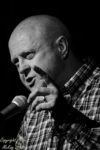 When we’re inviting people to contribute to our occasional features, there are two questions we ask. Do they have experience of the subject? Can they write about it in an interesting way? Ray Jones, CEO of Talentbanq , formerly Business Development Director at Time Out qualifies on both counts. He is passionate about live music and he knows how to write. It’s also fair to say that he’s seen a few gigs as well. So here’s what he came up with when we asked him to write about a memorable gig (and we certainly will be inviting him back):
When we’re inviting people to contribute to our occasional features, there are two questions we ask. Do they have experience of the subject? Can they write about it in an interesting way? Ray Jones, CEO of Talentbanq , formerly Business Development Director at Time Out qualifies on both counts. He is passionate about live music and he knows how to write. It’s also fair to say that he’s seen a few gigs as well. So here’s what he came up with when we asked him to write about a memorable gig (and we certainly will be inviting him back):
“The Windshield Wipers Slapping Time” – it was pouring as we waited in line to board the ferry to the Isle of Wight.
“I’ll take the 4×4” said my mate Bilko – and thank God he did. We were about to experience mud that made Glastonbury look a picnic. Fortunately we were also about to experience one of the best festival lineups of all times. The American Trilogy with nightly headliners – Tom Petty, Pearl Jam and The Boss.
With the ferry queue moving slowly – my 16 year old son CJ – heading for his first festival with dad, jumped out of the car with Bilko to get hot coffees. “Forward” shouted the guy from P&O so I jumped into the front and drove onto the ferry – and sailed away – without them.
The first of many memories from that wonderfully soggy weekend. Cars were being towed INTO Car Parks – tents were afloat on a sea of mud and wellies were getting stuck in the quagmire. And yet in amongst the mud, the blood and the beer were the smiles of people soaking up GREAT music.
Tom Petty on Friday night was a masterclass. The discomfort of rainwater trickling down our backs ignored as we took in the genius on stage.
I can’t remember when we saw Black Stone Cherry but they ripped it up, while the steamy wood-chip floor of The Big Top marquee seemed to be fermenting.
We met up with more friends. I have known Damian since we walked to primary school together. He and his wife were in one of those pre-sited Yurts. That’s the equivalent of The Ritz at IOW – and we did not let them forget it.
We partied quite hard to Madness on Saturday and Noel Gallagher was a fine warm-up on Sunday for what happened next – and that’s really what I had to share.
I’ve seen The Boss at Wembley, Hyde Park, The Olympic Park, Paris on the 4th of July and most memorably in his home state of New Jersey, but when he and the East Street Band walked out on stage at IOW2012 something magic happened.
The next three hours are a blur of singing, hugging, drinking, dancing and total admiration for a man and his band that delivered way beyond 100%.
We were exhausted when Mr Springsteen announced with a broad smile “We have a fucking boat to catch”
I have no idea if he made it because he broke into a massive, firework-festooned finale of “Twist and Shout” that had about 100,000 people partying in a way I had not seen at a festival before.
As we walked back to our tent my son said “Hey dad, this weekend has been the best thing I’ve ever done”
You can’t buy memories in Harrods! But you can make them at great festivals.
Thanks to wonderful people like John Giddings at Solo and Sarah Handy at Hard Rock I have many more memories of good times spent on the Isle of Wight, but those stories will have to wait. Maybe Music Riot will invite me back.
And here’s a little bonus from The Boss:
It’s looking like this feature might have legs. After a moving contribution from Danny Schmidt, Neil Sheasby from Stone Foundation was next to send a contribution over in our direction with his usual incredibly quick turnaround. We were expecting something special here, because Neil has seen a lot of gigs (and also played a lot), so this was always going to be something a bit special, and it also has the best closing line ever. So let’s hear about Prince’s “Lovesexy” tour at Wembley Arena.
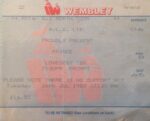 Tuesday 26th July 1988, Wembley Arena –
Tuesday 26th July 1988, Wembley Arena –
I still find it hard to comprehend that Prince is referred to in the past tense, another true original innovator lost. It’s like a curtain closing forever, a nail through the pulse of musical history. Prince & Bowie both passed in the space of only a few months…the likes of which we will never witness again, their gift was unique & unrepeatable. Thankfully it unfolded in our lifetime. Our very own Mozarts I suppose.
I get asked a lot about the best gig I’ve ever seen, a common topic amongst the social narrative especially after a few looseners in the pub. Now, I’ve been to my fair share, seen most of the bands & artists that I’ve wanted to, some on several occasions. I’ve been very lucky in that respect, I’ve had countless “right place/right time” moments. Probably never more so than watching Prince turn the cavernous Wembley Arena into what felt like an intimate dancehall on his “Lovesexy” tour of 1988.
I was fortunate enough to see Prince tons of times, he was never anything less than mesmerising (ok, “Batman” tour was a bit shit but still there were THOSE moments). His arrival back in the UK in ‘88 was eagerly anticipated as he’d cancelled the previous year’s dates for the “Sign O’ the Times” tour. I was so disappointed I didn’t even muster up the momentum to return my ticket for a refund. I decided to keep it as a souvenir of a non-event and make do with watching the film of the gig a hundred times over (“please wear something Peach or Black” was the instruction on the stub)
I managed to blag freebies for the Wembley gig via my record shop connections and myself & Hammy found ourselves nestled next to Pop royalty for the night – well, Bananarama sat behind us, the singer from The Adventures to the left and directly to my right hand side Lloyd Cole was seated, studious in spectacles, scribbling notes into an A5 writing pad all evening (I did enquire at one point if we should expect Commotions dance routines on his next tour but he just grunted and ploughed his head back into his jotter)
Even Prince’s presentation and re-arrangement of the building was unique for the time, I think he was the first artist I saw set up in the centre of the venue and perform on a 360 degree circular stage, both Stevie Wonder & Anita Baker gigs followed suit very soon after, it made for the perfect spectacle. The “Lovesexy” tour not only featured the irrepressible Cat (remember her?), the stage in the round also came complete with a Ford Thunderbird automobile, multi-level trellis staging, a fountain and a basketball court!
Despite selling out every night it’s reported that the huge production costs resulted in the tour making zero profit…did he care?
It was pop/funk/rock genius all rolled up into one of the most explosive performances I’ve ever watched. Master showmanship channelling prime time James Brown, Little Richard, George Clinton…musicianship that would leave most others standing (he’s easily the best guitarist I’ve ever heard) and of course…those songs. Let’s not overlook that marvellous run of recorded output and that of course is only what we have heard, thousands of recordings from that period remain in the vaults, unreleased. No one could keep up with him. The 80’s were defined by his soundtrack as a backdrop.
Find me a more complete piece of work than the sprawling epic that was “Sign O’ the Times”? Virtually faultless. “Parade”, “Around the world in a Day”, “Lovesexy”… just ridiculously amazing records. I used to study those albums, I think I played Prince at some point each & every day for at least 5 years. I carried a cassette of “Sign O’ the Times” album in my pocket everywhere I went for almost a year. “Purple Rain” was probably a red herring, he had so much more…could turn his funk & flavour in any direction and make it seem effortless and after a global success he wasn’t afraid to do a musical U-turn and take risks.
Ever the entertainer, he still didn’t play or pander to the gallery. He made his own rules, determined not to be typecast.
That night in July 1988 he was unstoppable, in his absolute prime. The show was relentless, it reached unthinkable, extravagant heights, unachievable by any else’s standards. I vividly recall one moment clear as crystal……..
Prince was off on a guitar workout, in itself a bona fide shock of electricity; he could play, really play…in an instant his solo peaks to dizzying heights, he throws the guitar around his back, struts off in 5″ high heels down a stage ramp somehow managing to drop to the floor doing the splits in full flow whilst still hurtling towards his microphone, he arrives at the edge of stage, spins round in a pirouette, boots his mic stand away from him, drops for one more session of the splits then leaps back up to catch his microphone in perfect time to start singing the next verse…all of the time the guitar stays intact…it was undoubtedly the coolest 60 seconds of my gig-going experiences; even Lloyd Cole put his pen down.
Just like you, The Riot Squad is going crazy at the lack of live music at the moment. We published a piece by Allan in February (just over three weeks before lockdown) celebrating the anniversary of his first gig in 1974. It was really popular and it was followed by a piece celebrating Steve Jenner’s first gig. After three months of musical famine we thought it would be good to ask some of our contributors and some of the artists we’ve reviewed in the past to write about a memorable gig that they saw or played. First out of the blocks was Danny Schmidt. We’re huge admirers of Danny’s work; he’s a gifted, erudite and passionate singer/songwriter (check out the review of his recent brace of singles “A Prayer for the Sane” and “2020 Vision”) and we’re delighted that he’s agreed to share this memory with us:
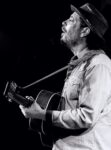
Danny Schmidt by Theo Looijmans
One of the most memorable live shows of my life was the night I saw Eric Johnson at Steamboat in Austin, TX on August 28th, 1990. I remember the date distinctly because it was the day after Stevie Ray Vaughan died. Having grown up in Austin, I was a massive fan of both Eric Johnson and Stevie Ray Vaughan. They were two of my biggest guitar heroes, and I saw them live every chance I got from the time I was old enough to attend live shows. And while their styles were vastly different, they were two branches descended off the same Jimi Hendrix-influenced tree. And as I understood it, they were each huge admirers of the other’s work, if not close personal friends.
In 1990, Eric Johnson’s star was really ascending quickly, and he played two sold out nights, back-to-back at Steamboat, and I had tickets to both nights. The first night was striking because Eric’s management team had upped the production value (and theatrics) of his live shows by having him enter the stage to a huge laser and smoke show, for several minutes, while he improvised riffs with his signature guitar tone, hidden from our view within the visual spectacle. And the guitar built the crowd into a frenzy before the smoke cleared, leaving Eric in a literal star of lasers and a single blinding spotlight from behind, full-on Guitar God, shredding the room from his monolithic place at the center of the stage. It worked my teenage self into an ecstatic state of guitar delirium. That was how the first night of the two-show stand began.
Late that night after we’d all gone home and gone to sleep, in another part of the country, Stevie Ray Vaughan’s helicopter crashed, ending his life tragically, at the age of 35 years old. We all learned of the news first thing the next morning.
The city of Austin was crushed, devastated. The town was silent and shocked. I felt hollow all day, in disbelief. That night, I had to drag myself to Eric’s show, night #2 at Steamboat.
Instead of smoke and lasers and high drama, Eric took the stage silently, no lights, no effects, no roaring feedback guitar, no PA announcer welcoming him to the stage. No one really knew the show was even starting. Instead, he just shuffled to the mic, more of a fragile slumped human being than a guitar god. And instead of shrieks of guitar, he gave a quiet, humble, candid, unrehearsed, vulnerable, heartfelt tribute to Stevie Ray Vaughan. He just told the crowd how much Stevie had meant to him, and how much his work had meant to him. The speech ended when he didn’t have anything else to say. He just stood in silence for an extra few awkward seconds, and then turned and picked up his guitar.
He then proceeded to draw fire from the strings, and fill the room with a whirlwind of sadness, madness, grief, angst, fury, exhaustion, all of it. He brought Stevie Ray’s Texas flood to life inside the walls of Steamboat.
Eric is truly a virtuoso. His technical skills are legendary, and even the hyperbolic statements about what his fingers are capable of doing on the strings are understatements. Some have questioned his musicality and the emotional connection to his songs, or the inaccessibility of his music sometimes. But on that particular night, we all bore witness to what’s possible when a bon afide virtuoso is channelling a well of emotion from the depth of his broken heart to the tips of his mythical fingers.
It was an experience that literally left us all speechless. As much as I remember Eric’s actual playing that night, I remember the faces of my two best friends who were with me at the show even clearer. Between every song we would look at each other and try and utter some sort of statement expressing how amazing it was what we had just witnessed. And instead, we could only stammer nonsensical sounds at each other, unable to form actual thoughts and words. And instead we would just hug or high-five. And then Eric would fire up the next song.
To this day, I can’t properly articulate the power and energy which swirled around the room that night, emanating from the stage, from Eric’s guitar, from Eric himself, with no theatrics . . . just a true master and a room full of open ears meeting together to share a night of grief and celebration. For me, that night set the bar for what’s emotionally possible throughs the kinetic power of music.
 Was this crowd hard? They would have crucified Barabbas as well, but that’s Dundee for you.
Was this crowd hard? They would have crucified Barabbas as well, but that’s Dundee for you.
Once again, I blame Steve Jenner for this one. He couldn’t be satisfied with making us perform behind the decks with a semblance of professionalism on our own territory. No, he had to go out and get us gigs in Beanoland as well; which is why I found myself doing a gig at the Royal Centre Hotel on a Tuesday night in January. Now, if that’s not a sought-after gig, I don’t know what is. A gig to die for, and I nearly did.
Despite my reservations (and they were many and varied), I allowed Steve to persuade me that this would be good for my personal development as a DJ, would help to improve relations between town and gown and more importantly would generate extra beer tokens. The gig was going pretty well. OK, none of the local virgins were importuning me to indulge in post-performance amorous antics but, equally importantly, nobody had threatened to panel my coupon for me. Not a bad compromise.
This wasn’t a dancing gig. The idea was to get the crowd in the mood to visit the hotel’s nightclub, Teazers, when the bar closed. I was doing pretty well, perhaps too well because they weren’t starting to drift through to the club yet and closing time was approaching. I tried to get in as many requests as I could and I thought I was worth a 2-0 lead with 5 minutes to go. So the last record’s crucial; I need to give them something to remember me by and I succeeded only too well.
I’d already called last orders at the bar and I cued up something that I was positive they wouldn’t have heard a DJ play there before; once again my reasoning was perfect. As I wished everyone good night and hoped that they would pay a visit to Dundee’s premier nitespot, Teazers, I hit the play button on the final track of the Queen album “A Night at the Opera” which was Brian May’s multi-layered guitar instrumental version of “God Save the Queen”. Very ironic, I thought; a reference to the end of a night at the pictures. The irony works on so many different levels.
I think I single-handedly set back town and gown relations by 20 years that night. I was in the saloon and the bad guy, probably Jack Palance had just kicked open the doors. Within 2 seconds all conversation stopped and every pair of eyes in the place was on me, pouring out a hatred that went all the way back to 1314 (and I don’t mean quarter past one). I got a few boos and whistles but, thankfully, no physical violence was visited on my frail and puny body. I heard a few remarks like “student poof” and “English wanker” (now that’s ironic on more than one count because I strongly resent being labelled English).
Fortunately I escaped with my life on this occasion for 2 reasons; the lure of the dancefloor and the fact that the only place to top up the alcohol level was the nightclub. I learned 2 valuable lessons that night: don’t play any version of “God Save the Queen” (unless it’s by the Sex Pistols) in Scotland; and, never underestimate the ability of a crowd to turn from happy punters to a brooding, malevolent mob with murderous intent at the drop of a stylus. The manager wasn’t very happy. Mind you I wouldn’t be a ray of sunshine if I’d had to contend with 40 years of being called Willie Rasch (his real name, seriously) and that was the end of my brief but tempestuous career as a student ambassador to the good people of Dundee.
I still think Jenner should have known better than to think we could do these gigs and escape with our lives. I say this because of something that happened on our second full day in Dundee. We decided to sample some of Dundee’s finest hostelries in search of some foaming Scottish ales for some lunchtime refreshment and visited one of the pubs down by the docks; “The Gauger”, I think. Steve made his way to the bar, which was pretty quiet, and spent about 5 minutes trying to order beer in his best East Midlands accent. The penny finally dropped. I tapped him on the shoulder and told him to sit down. Assuming the broadest Fife accent I could muster after 8 years away, I said those words which would be repeated many times over the next 3 years: “A pint of 80/- and a pint of Tennent’s please.” Within 30 seconds, 2 foaming pints appeared in front of me and were dispatched in short order before moving on to somewhere a little more welcoming and tolerant. I wish I’d tried to pay with an English fiver. I’m as guilty as the next person of refusing to let history go (unless the next person’s a member of Settler Watch) but I wouldn’t let it get in the way of making a living.
Even the best of us get it wrong sometimes (or make slight misjudgements). Mr Jenner himself nearly provoked a riot in the Tav Bar by playing a stirring Hughie Green version of “Land of Hope and Glory” to bring the evening to a very hostile close. And there’s no way of denying that one because it was immortalised on a TDK cassette and is now available on shiny digitally remastered CD. I like to listen to it now and again because it makes me feel a little bit better about my own brush with the baying nationalist mob in the Royal Centre.
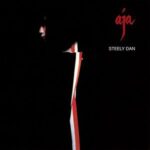 Some albums in your collection, however important they are musically, take on an importance in your life that goes way beyond some sounds coming out of boxes in the corner. Sometimes an album worms its way through your defences to connect up with all sorts of other parts of life and, before you know it, the songs have become inextricably entangled with memories of friends, family and lovers; and there’s no way of untying those knots. “Aja” is one of those albums for me; it has mellow memories of my student years, memories of friends met along the way and tragic memories of one of those friends taken when she had everything before her.
Some albums in your collection, however important they are musically, take on an importance in your life that goes way beyond some sounds coming out of boxes in the corner. Sometimes an album worms its way through your defences to connect up with all sorts of other parts of life and, before you know it, the songs have become inextricably entangled with memories of friends, family and lovers; and there’s no way of untying those knots. “Aja” is one of those albums for me; it has mellow memories of my student years, memories of friends met along the way and tragic memories of one of those friends taken when she had everything before her.
“Aja” was released in October 1977 and the timing was perfect for me. It was the start of my second year at Uni and I’d escaped from halls into a flat where I shared a room with a mate from my first year. We were both musicheads, both played guitar after a fashion and I had a reasonably good stereo. It’s fair to say there was music playing from the moment one of us woke up until the last head (usually mine) hit the pillow. I had a well-paid summer job (which I could tell you a few stories about), so I hit Dundee every October with plenty of readies to support the local record shops.
I was already a bit of a Steely Dan fan, so “Aja” was a no-brainer for me. As I listened to it end-to-end for the first time, I read the lyrics, the list of musicians involved on each track (which I now realise was a guide to the best session guys in the world at that time) and the sleeve notes written by Michael Phalen after spending some fraught and unprofitable time with Becker and Fagen trying to extract some sensible contributions. Typical of their contributions was the description of “Peg” as a ‘pantonal thirteen blues with chorus’; luckily Michael wasn’t a guy to bear a grudge.
It was a strange time for a band like Steely Dan; they were the antithesis of the punk philosophy. I loved the energy of punk/new wave/power pop but I wasn’t willing to take the slash and burn attitude to older music (it cost me a fortune to buy this stuff, no bloody way was I just ditching it). The album took an age to make, the playing was exquisite and there were only seven tracks, none of them less than four minutes long. Just compare that to a Ramones album with fourteen songs, none much more than two minutes long (and I loved The Ramones as well), but “Aja” was about pure musical class, cryptic and coded lyrics with a seedy undertone and some outrageously good solo playing. I didn’t realise at the time that I’d bought a jazz album.
And talking of jazz, that was exactly the kind of cigarettes that accompanied listening to “Aja” for my university years; it was the perfect match, mostly laid-back arrangements, lots of space and perfect to chill out to. It was one of half a dozen albums that always found their way to the deck over the next three years, however many new albums I bought. I wasn’t even choosy about picking favourites; there are seven tracks, “Black Cow”, “Aja”, “Deacon Blues”, “Peg”, “Home at Last”, “I Got the News” and “Josie” and they’re all stunningly good. I would happily listen to any of those songs at any time. But the university idyll couldn’t last forever and I settled back in with my family for a while after graduation. It was the beginning of the Thatcher era and I was living in Mansfield; it was obviously going to be grim, or so I thought.
I settled into a temporary job and listened to a lot of depressing post-punk until something very strange happened. On the regular Friday night out, a mate suggested a visit to The Red Lion, a fun pub (think sleazy, cheesy and very camp) that had just taken off. I was hooked, and after the second visit I landed a weekend bar job there. If the memoirs ever come together, there’s a chapter there that might need very careful legal scrutiny. And that’s where I met Gill (beautiful with a razor-sharp wit) and her friend Denise, both nurses doing part-time bar work. Within a few weeks, we’d all decided to share a house together on Woodhouse Road with another friend, Andy, and I was living a student life again.
I brought one important thing to the party; my record collection. Within a few days, Gill had discovered “Aja” and I realised I would never really own the album again. As much as I loved you Gill, I have to say you absolutely trashed that album; fingerprints all over the first track on each side, and the album never, ever went back in its sleeve. Did it matter? No it didn’t, because she loved the album with such a passion I couldn’t get angry about it. It wasn’t unusual to walk in and find Gill in her underwear ironing that night’s outfit while listening to “Aja” (we always popped a head round the living room door before inviting guests in). We were great mates anyway, but this album was something that created an everlasting bond. While we shared that house, we both formed the relationships that defined our lives (and a few that didn’t); and “Aja” was always there in the background.
Life moved on, the way it does in your early twenties when you think you’ll live forever, and we all left the house to move in with our various partners but kept in touch, directly or on the grapevine as we moved in our chosen directions. Gill started a successful business, fell in love with a nice guy and they had three beautiful daughters. I drifted through nightclub and pub management, the dole queue and self-employment and finally, in 1992, landed a job in entertainments for the armed forces. It was great news and I was all ready to make a new start on a residential training course. Everything was good; and then the doorbell rang.
Denise was on the doorstep, in tears. Gill wasn’t with us any more; she’d had a massive brain haemorrhage a few days before while out shopping and her life support had just been switched off. It wasn’t the first time I’d had to deal with a sudden death (from the other side of the doorstep), but this was someone I’d lived with, and loved, and I thought would always be a part of my life. She had a loving husband and three daughters under five and she had gone, forever. Because of the new job two hundred miles away, I couldn’t get to the funeral (an older me would say ‘Fuck the new job’), so I had to be represented. I still miss Gill to this day; she was the kind of person that took up a huge space in your life and there was a huge hole when she left.
And what was left? Well, I still love “Aja”, and every time I listen to the album, particularly the vinyl version that still has all of the marks and noises left by Gill, I remember that beautiful person ironing in her bra and knickers and singing along to “Peg” at the top of her voice.
And there’s a postscript to this story. On October 30th 2017, I finally got to see Steely Dan live on a double bill with The Doobie Brothers at the 02. The band, as you would expect, was absolutely superb, but the atmosphere was slightly muted because of the death, less than two months before, of Walter Becker. A few gallons of silent tears were shed that night, but mine didn’t really have anything to do with mourning Walter Becker.
 We seem to have a spate of singles at the moment. Not complaining, but it’s mainly albums that pop through the letterbox or into the inbox these days. In a different era, there were definite reasons for releasing a single; because it was aimed at a specific market, because it was a trailer for an upcoming album or because it didn’t really fit on the album and all of these hade to be part of a marketing schedule. Things are much more fluid now; it’s only a few weeks since Danny Schmidt released a complementary pair of singles almost simultaneously and almost immediately after they were completed in order to catch the moment they were documenting. In this case it seems that Illinois native Dan Hubbard has a song that he’s pleased with and wants to get it out where it can be heard.
We seem to have a spate of singles at the moment. Not complaining, but it’s mainly albums that pop through the letterbox or into the inbox these days. In a different era, there were definite reasons for releasing a single; because it was aimed at a specific market, because it was a trailer for an upcoming album or because it didn’t really fit on the album and all of these hade to be part of a marketing schedule. Things are much more fluid now; it’s only a few weeks since Danny Schmidt released a complementary pair of singles almost simultaneously and almost immediately after they were completed in order to catch the moment they were documenting. In this case it seems that Illinois native Dan Hubbard has a song that he’s pleased with and wants to get it out where it can be heard.
“Hotshot” is a twist on the eternal triangle theme, with the disruptor taking the part of a middling small-town singer with a Loki-like appetite for mischief and mayhem, moving in to break up a solid relationship for his own ends. It’s an interesting arrangement as well; Dan recorded the 12-string guitar and vocal acoustically (and loud) before handing it over to his guitar player Matthew Pittman to create a dense, multi-layered, reverb-heavy mix where the instruments blend into each other. It’s easy enough to pick out the synth, but I’d struggle with the mandolin and marimba. There are lots of nice little hooks that put their stamp on the song, including the unison guitar/bass riff in the bridge and choral vocals that push the song on to its climax. “Hotshot” is Americana on steroids; front and centre is acoustic while the rest of the production wraps around it like a woolly jumper, adding extra emphasis and contrast to the clean guitar and vocal parts.
“Hotshot” is simple song with a big arrangement displaying Dan’s gift with a melody and a lyric and it’s well worth a listen.
It’s self-released in the UK on Friday June 26th to stream or download.
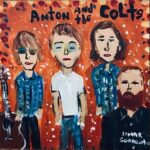 It’s a bit of a rock/pop tradition; the weekend song. They’re liberally sprinkled through the history of the rock era and the best of them have a bit of an edge. Dave Edmunds, not surprisingly had more than one, his Nick Lowe co-write “Here Comes the Weekend” and the John Fogerty cover “Almost Saturday Night”. Even Elton got in on the act with “Saturday Night’s Alright for Fighting”. As we moved towards the 21st century, the emphasis shifted from booze to clubs and chemicals – David Gray’s “Babylon” and Hard-Fi’s “Living for the Weekend”. Which points us to 2020 and the new single from Anton and the Colts, “Boy Living for the Weekend”.
It’s a bit of a rock/pop tradition; the weekend song. They’re liberally sprinkled through the history of the rock era and the best of them have a bit of an edge. Dave Edmunds, not surprisingly had more than one, his Nick Lowe co-write “Here Comes the Weekend” and the John Fogerty cover “Almost Saturday Night”. Even Elton got in on the act with “Saturday Night’s Alright for Fighting”. As we moved towards the 21st century, the emphasis shifted from booze to clubs and chemicals – David Gray’s “Babylon” and Hard-Fi’s “Living for the Weekend”. Which points us to 2020 and the new single from Anton and the Colts, “Boy Living for the Weekend”.
Anton O’Donnell, who fronts Anton & The Colts, is based in Glasgow (bear with me here) the subject of a very famous music-hall song on a similar theme, “I Belong to Glasgow”, written by Will Fyffe a hundred years ago in 1920. “Boy Living for the Weekend” opens with a plaintive harmonica evoking the horn of a train heading for the city before breaking into a Celtabilly shuffle that has a lot in common with the Dave Edmunds offerings. Lyrically, it’s a 2020 version of all the songs above – let’s shake off the shackles of the weekly grind and take everything (every little bit) that the weekend has to offer. After all, we’ve got five days to regret and recover.
Sonically, it’s a lot like a seventies/eighties Dave Edmunds Spector-like Wall of Sound mix. There’s a lot going on, with two guitars, the punchy rhythm section, piano and loads of harmonica fills under Anton’s gruff American-tinged vocal. It’s the kind of production that would take your head off played on a Rock-Ola; it’s a full-on assault on the senses in the same way as the anticipated weekend will be, and once it starts, there’s no letting up until it’s over.
“Boy Living for the Weekend” is out now as a download and on streaming platforms and will be available as a limited run of 300 seven-inch singles later in the year.
Here’s a bit of a late addition, the video which was released this week:
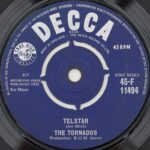 It’s not the first single I ever bought, but this is my first memory of the combination of music and film, a couple of decades before the pop video and MTV took hold. Where do you think the least likely place would be to see (and hear, because you certainly bloody heard it) a Scopitone film clip of a huge sixties tune. An instrumental that managed to imprint itself on my consciousness because it’s a cracking, ground-breaking tune and for another unrelated reason I’ll revisit later. That place was a pit canteen on the east coast of Fife and the tune was “Telstar” by The Tornados. Unlikely? Maybe, but true nevertheless.
It’s not the first single I ever bought, but this is my first memory of the combination of music and film, a couple of decades before the pop video and MTV took hold. Where do you think the least likely place would be to see (and hear, because you certainly bloody heard it) a Scopitone film clip of a huge sixties tune. An instrumental that managed to imprint itself on my consciousness because it’s a cracking, ground-breaking tune and for another unrelated reason I’ll revisit later. That place was a pit canteen on the east coast of Fife and the tune was “Telstar” by The Tornados. Unlikely? Maybe, but true nevertheless.
It seems unlikely now, but at that time, nearly sixty years ago, the Fife coast between Kirkcaldy and Methil was a string of mines ripping coal out from underneath the River Forth. The Michael Colliery in East Wemyss was just one of those mines, providing work for the community and blackening the coastline. South-west of Kirkcaldy and north-east of Methil the beaches were golden; between those two towns, the coast was a uniform black and it’s just beginning to recover now, fifty years after the mines closed.
The villages along this stretch of coast, Dysart, West Wemyss, Coaltown of Wemyss, East Wemyss, Buckhaven (Buckhyne if you’re a true Fifer) and Methil were mining communities and the pit canteen was as much of a social hub as the local pub or club. I don’t know about The Frances in Dysart (or The Dubbie as we knew it) or The Wellesley in Buckhaven, but The Michael in the early sixties had a Scopitone video jukebox and it was the eighth wonder of the world. My introduction to this wonderful device changed my life forever.
In a small village and tight-knit community, news spreads quickly and the installation of a jukebox that showed films had as much of an impact as the Cuban missile crisis. Security at the Michael site was non-existent and anyone could walk in to the canteen, so why wouldn’t you just do it, even at the age of seven. Obviously, I didn’t have any money to feed the Scopitone beast when I made my first visit to its lair, but it didn’t matter; someone with incredibly good musical taste had already fed the monster. I looked the Scopitone in the eye and waited for a reaction.
Exciting doesn’t really do it justice; the sound that came out of that beast was breath-taking and it was combined with film of The Tornados and a satellite launch. Like most jukeboxes, the tube amplifier was powerful and definitely not subtle. It was all about excitement and maximum impact; combine the pulsing sci-fi sound effects and the ascending organ pattern of the intro leading up to the eruption of the main melody with a shot of a Saturn I thrusting upwards into space spliced with shots of the band performing on 16mm colour film and you have something that, for me, was literally out of this world. From that moment on I was hooked. I liked the pop music of the time when I got to hear it on the radio or on a small black and white TV, but this was something completely different; it was loud, it was visceral and impossible to ignore. I knew that I wanted more of it, and I still do.
It was only years later that I understood the significance of Telstar’s creator, Joe Meek, in pop history, but I knew at the time that I had heard a glorious noise and I was desperate to hear more of the same.
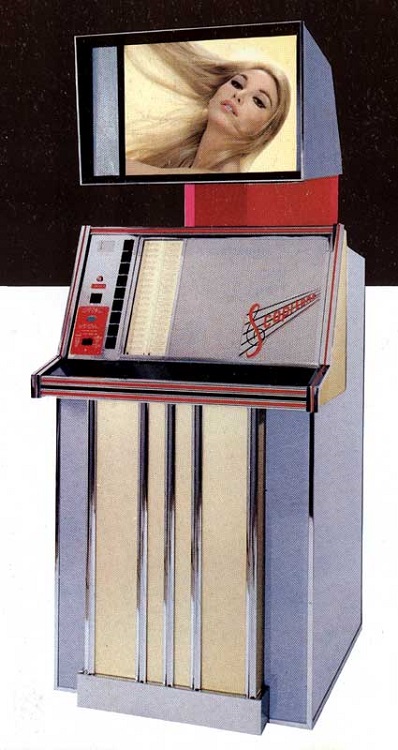
Le Scopitone was a French invention that achieved limited success despite its great potential as a promotional tool. It was bulky but reasonably reliable, although the number of songs was limited compared to an audio-only jukebox and production costs were obviously much higher where film was involved. Also, Scopitone never managed to lure the real superstars of the time to the format. It managed to survive until 1978 (only three years before the official launch of MTV) when it succumbed to the new, more cost-effective, video tape. I hope Le Scopitone had the same effect on others as it had on me.
Let’s get back to “Telstar” and the other association that explains why I love this tune so much. From about the age of five, my dad took me to Bayview (where the terraces were made of railway sleepers and gravel, with the odd crush barrier) to watch our local team East Fife, hoisting me over the turnstile so it wouldn’t register and he wouldn’t have to pay for me. A huge part of the ritual is applauding your team on to the pitch as the run-on music plays and you can probably guess by now what the run-on music was at Bayview. Fifty-five years and more (and a few relocations) have passed since then, but my team is still East Fife and they still run on to “Telstar” at New Bayview on the banks of The Forth. Some things don’t need to change or be improved.
And I still love to listen to “Telstar”, preferably my 7” vinyl copy. The anticipation as the stylus touches down and, the crackles and scratches and the rush as the intro builds up all take me back to that day in a pit canteen in East Wemyss, a lifetime ago.
Finally, a couple of pieces of trivia for you. The legendary Clem Cattini played drums on “Telstar” and George Bellamy (father of Muse’s Matt) played rhythm guitar – did you ever wonder where “Knights of Cydonia” came from?
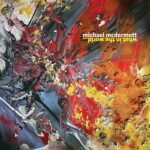 It’s quite a story; Michael McDermott’s short rise and relatively successful start to a career in the early nineties, through a long downward spiral ending in addiction and jail and, ultimately, recovery and redemption. His previous four albums “Six on the Out” (as The Westies), “Willow Springs”, “Orphans” and “Out From Under” cover those themes pretty comprehensively, although Michael McDermott isn’t showing signs of running out of inspiration any time soon. He’s a songwriter who’s equally at home writing pieces that are intensely personal, straightforward love songs, observational songs, fun songs and, on this album, a couple of powerful songs inspired by the state of America in 2020. Whatever he’s writing, he’s never less than totally honest and always completely believable.
It’s quite a story; Michael McDermott’s short rise and relatively successful start to a career in the early nineties, through a long downward spiral ending in addiction and jail and, ultimately, recovery and redemption. His previous four albums “Six on the Out” (as The Westies), “Willow Springs”, “Orphans” and “Out From Under” cover those themes pretty comprehensively, although Michael McDermott isn’t showing signs of running out of inspiration any time soon. He’s a songwriter who’s equally at home writing pieces that are intensely personal, straightforward love songs, observational songs, fun songs and, on this album, a couple of powerful songs inspired by the state of America in 2020. Whatever he’s writing, he’s never less than totally honest and always completely believable.
The furious rush of the title song opens the album, pulling no punches as it tears through the state of the USA today, melding the lyrical helter-skelter of “Subterranean Homesick Blues” with the musical punch of “Born to Run” in a scathing attack on the Trump vision (and we’re done with the Dylan and The Boss references now).
The musical stylings are what you would expect from a Michael McDermott album; there’s a lot of variety. From the headlong charge of “What in the World”, through the finger-picked guitar on “Positively Central Park” and “New York, Texas” to the Motown bounce of “Contender”. The album certainly isn’t one-paced and, as always, demonstrates Michael’s range and versatility. As ever the musicians do exactly what’s needed to get the message over, without ever sounding showy.
Lyrically, the album’s a step away from the quartet mentioned above. The title song and the heart-rending “Mother Emanuel” are both protest songs, while the rest of the album focusses mainly on a couple of themes; the post-addiction space that Michael occupies now, and an exploration of some of the events in his personal history that may have been triggers for the dark period. This isn’t about self-justification, it’s more in the nature of a warning to others of the treachery of that particular slope.
So, which songs pushed my buttons? Obviously, the title song with its stinging attack on USA 2020, including the unequivocal message: ‘It’s not to hard to see The Presidents’s a criminal’ is right up there. “The Veils of Veronica”, the story of someone with too few skins to deal with the world is heart-rending, and the gentle “Blue-Eyed Barmaid” turns the tables on the cliché of the customer pouring out his troubles to the long-suffering barmaid. With eleven new songs (plus a bonus of the acoustic demo of the title song), there’s so much to love here; the songs are intense and Michael’s vocal delivery is impassioned, as always. It’s a grim reality of the music business today that Michael McDermott is unlikely to become rich, but that won’t stop him making music and we’ll all benefit from that.
“What in the World” is released in the UK on Friday June 12th on Pauper Sky Records.
BTW, it passes the Will Kimbrough test as well; he’s on pretty much everything I’ve loved over the last five years and he’s also doing his thing here.


